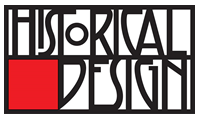Product Description
Filippo Tommaso Marinetti, “Les Mots en Liberte Futuristes” 1919


FILIPPO TOMMASO MARINETTI (1876-1944) Italy
“Les Mots en Liberte Futuristes” 1919
Bound volume with folding plates
Edizioni Futuriste di “Poesia”
Published by Corso Venezia, 61, Milan
Dimensions:
Book: H: 8 15/8” x W: 5 1/16”
Custom leather box: H: 8 15/16” x W: 6 1/16” x D: 1 3/16”
Custom silk slipcase: H: 10” x W: 16 5/8” x D: 1 7/8”
With this fundamental book whose subject was the so-called “words-in-freedom,” F.T. Marinetti summarized about 15 years of research in the field of the renewal of poetic and literary language. This book features several typographic compositions spread in fold-out pages where the author shows his great creativity in typographic composition by using typefaces of very different style and size, as well as hand-designed typefaces and calligraphic writings. The results are of striking, impressive, visual effects that have since influenced many writers and poets.
Filippo Tommaso Marinetti, “Les Mots en Liberte Futuristes” 1919
NORMAN BEL GEDDES (1893 – 1958) USA
Medal 1933 (Commemorating the twenty-fifth anniversary of General Motors)
Silvered bronze
Signed: Norman Bel Geddes [copyright mark ] 1933
Exhibited: The Metropolitan Museum of Art, New York, May 16-Jan. 7, 2001, Mint Museum of Craft & Design, North Carolina, May 3-July 28, 2002
Illustrated: Johnson, J. Stewart, American Modern 1925-1940: Design for a New Age, Harry N. Abrams & The American Federation of the Arts, 2000, p. 127
Diameter: 3″
This medallion, commemorating the twenty-fifth anniversary of General Motors, is an example of the Streamlined style that dominated architecture and design in America from the late 1920s to the end of the 1930s. With its abstracted, teardrop-shaped vehicle form depicted in motion, with the tall winglike element rising from its center, the overall effect is one of speed and movement—characteristic of the Streamlined style and appropriate to the automobile and airplane age. Norman Bel Geddes was trained as a theatrical set designer but best known for another project for General Motors, the Futurama exhibition at the 1939 New York World’s Fair. This exhibit, through which visitors were propelled on a giant conveyor belt, depicted a utopian vision of America in the near future, a world dependent on the speed and efficiency of the automobile for work and recreation.
